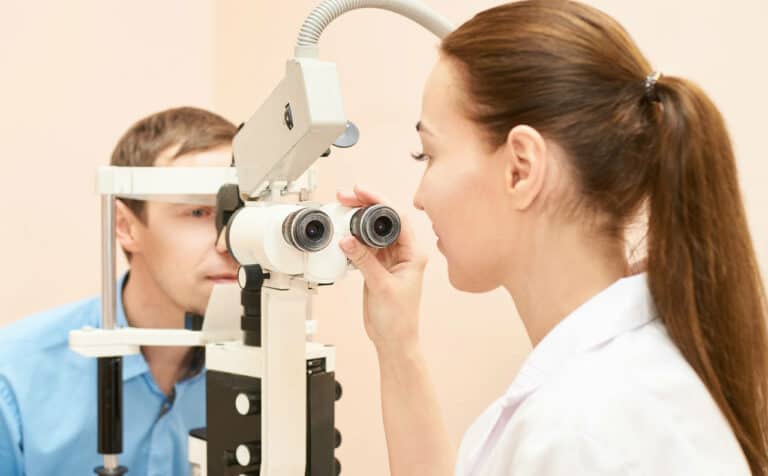Corneal Abrasion Treatment in Jacksonville, FL
A Corneal abrasion is a superficial scratch on the Cornea; the clear protective dome at the front of the eye. The top surface of the cornea is covered by a thin layer of cells called “epithelium” which can be easily scratched off by contact with flying dust, sand, fingernail, metal particles or contact lenses. The cornea has many nerve endings just under the epithelium, so any disruption of the surface can result in excruciating pain and light sensitivity.
Causes & Symptoms of Corneal Abrasion
Many situations can result into a corneal abrasion: Flying dust, sand, fingernail, make-up brush, excessive eye rubbing, metal particles, contact lenses, tree branch injury or even the edge of a piece of paper.
Symptoms of a corneal abrasion do not always happen immediately. You should suspect corneal abrasion if you experience severe pain, light sensitivity, foreign body sensation (a feeling that a small piece of sand is stuck in the eye), tearing of eyes and blurry vision
Potential Treatments for Corneal Abrasion
In case of corneal abrasion, it’s important to seek prompt medical attention. Left untreated, an abrasion could become infected and result in a corneal ulcer, especially those involving organic matter (such as a tree branch).
Do not rub your eye or try to remove any object that is embedded in your eye. If you use contact lenses, do not wear them until you are seen by an ophthalmologist. Abrasions often completely heal with a few days when managed with antibiotic ointment and artificial tears.
Corneal Erosion
Normally abrasions will resolve within a couple of days. Even severe abrasions tend to heal in a week or so. During this time, patients must not wear their usual contact lenses and must make sure that they don’t rub their eyes, even if they feel itchy and sore. Sometimes, corneal erosion can occur subsequent to an abrasion, on the same site. Erosion is a slightly more severe condition, where the top layer of the cornea (the epithelium), doesn’t attach correctly to the next layer down. It causes similar problems to a corneal abrasion, but may require slightly more treatment to heal.
Corneal Erosion Treatments in Jacksonville, FL
Generally, the treatment for corneal erosion is similar to that for abrasion. If the problem doesn’t resolve, then the following treatment options may be suggested: the damaged epithelium can be removed; some of the cells in the cornea may be removed using a laser; using a specialist contact lens; and undertaking an anterior stromal puncture, when small holes between the epithelium and the layer below promote better bonding.

